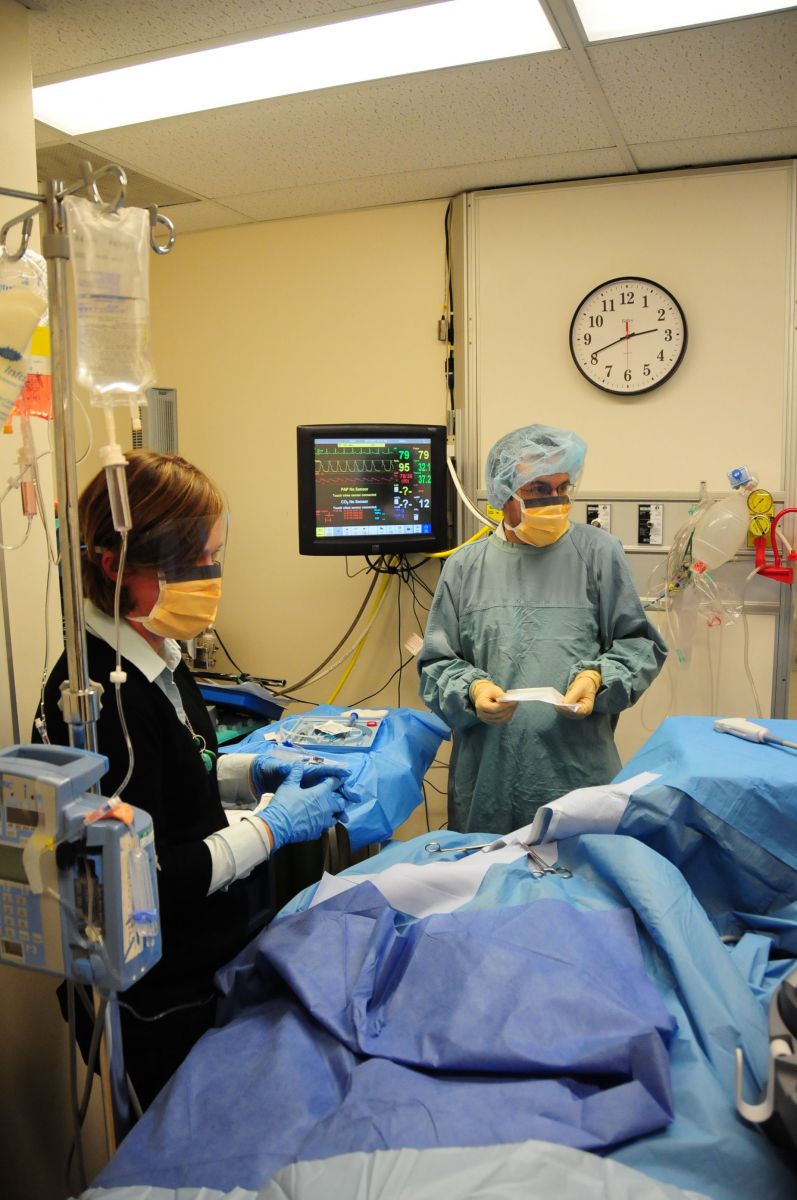


Theme
Simulation
INSTITUTION
University of Toronto
Simulation is an effective platform for teaching procedural skills. In particular, hybrid simulation (HS) is useful in training for complex procedural skills, especially for intermediate to advanced learners. Cognitive load measure can help tailor scenarios to an individual's level of expertise. However, data is lacking on how to assess cognitive load in hybrid simulation. We aimed to test the utility of the NASA-TLX measure of workload in assessing HS scenario difficulty.

Ten senior residents in General Internal Medicine participated in two HS scenarios in ultrasound-guided (
1. Nestel, D., Groom, J., Eikeland-Husebø, S. & O?Donnell, J. M. Simulation for Learning and Teaching Procedural Skills. Simulation in Healthcare: The Journal of the Society for Simulation in Healthcare 6, S10–S13 (2011).
2. Ziv, A., Wolpe, P. R., Small, S. D. & Glick, S. Simulation?Based Medical Education: An Ethical Imperative. Academic Medicine 78, 783 (2003).
3. van Merrienboer, J. J. G. & Sweller, J. Cognitive load theory in health professional education: design principles and strategies. Med Educ 44, 85–93 (2010).
4. Hart, S. G. Nasa-Task Load Index (NASA-TLX); 20 Years Later. Proceedings of the Human Factors and Ergonomics Society Annual Meeting 50, 904–908 (2006).
5. Stroud, L. & Cavalcanti, R. B. Hybrid Simulation for Knee Arthrocentesis: Improving Fidelity in Procedures Training. J Gen Intern Med (2013).
We wish to thank Karen Delaney Laupacis - Standardized Patient Program, and Lisa Satterthwaite - Surgical Skills Lab, both at the University of Toronto, for their invaluable assistance in this project.

The figure indicates the reported total worload per scenario for alll 10 participants. NASA-TLX workload results ranged from 27-87 (from possible 6 -120), increasing on average 16 points (range 5-35) between scenarios 1and 2. Differences were similar regardless of scenario sequence. However three trainees (Res 5, 6 and 9) experienced technical difficulties with Scenario 1 resulting in higher workload. Major sources of workload were temporal demand, frustration, mental and physical demand. As in prior studies, NASA TLX workload and procedural performance did not correlate (r=-0.03).
NASA-TLX workload was correlated with scenario difficulty. Sources of workload include both physical and mental measures. This is similar to previous clinical studies using NASA TLX. In conclusion, Retrospective analysis of workload using NASA TLX correlates with scenario complexity in this hybrid simulation exercise.
Measuring CL can help tailor simulation exercises, by adjusting scenario difficulty to individual trainees’ proficiency. NASA-TLX domains appear to capture CL appropriately in hybrid simulation.
Determining cognitive load during simulation scenarios with the TLX tool may thus enhance learning.
 Send Email
Send Email